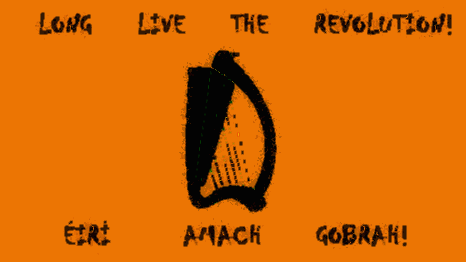This is an old revision of the document!
Table of Contents
Kingdom of Ireland (Look to the West)
In Look to the West, Ireland is a separate kingdom to, but in personal union with, the Kingdom of Great Britain. Ireland has produced many of the greatest “English” statesmen and soldiers, but is itself considered a backwater by most Britons, not least those same sons who have turned their back on it. Ireland's chief problem in the seventeenth and eighteenth centuries was that it is divided between a Catholic majority and a Protestant minority, the former not trusted by the Protestant English, who consider them a likely fifth column in the event of a French or Spanish invasion. The Catholics were not permitted to vote, as was also the case in England, but the fact that the Protestant Irish nobility had power over them led to much greater misery.
Many exiled Irish Catholics served in the armies and states of France, Austria and especially Spain.
Ireland was particularly controversial in the question of Catholic emancipation, but a rising in the early part of the 19th century changed all that. The “United Society of Equals”, an ostensibly pan-Irish, but in practice Protestant-dominated rebel group, staged a French-inspired Revolution that resulted in the death of most of the Irish Parliament and the devastation of Dublin. The revolution was defeated by loyalist Catholics led by the Earl of Mornington, Richard Wesley. After the accession of Henry IX (Eanrig II) to the throne, Wesley became Lord Deputy and a new Irish Parliament, with increased powers and most Catholic rights restored, was instituted.
List of Kings and Queens of Ireland (Rí na hÉireann) since the Glorious Revolution
House of Orange-Nassau and House of Stuart
1689-1702: Uilliam I (William III of England and II of Scotland). From 1689-1694 was co-monarch with Máire II (Mary II of England and Scotland).
House of Stuart
1702-1714: Áine I (Anne I of England and Scotland, after 1707 Anne I of Great Britain)
House of Hanover
1714-1727: Seoras I (George I of Great Britain and Hanover)
1727-1743: Seoras II (George II of Great Britain and Hanover)
1743-1749: Uilliam II (William IV of Great Britain, William I of Hanover)
House of Stuart
1749-1750: Seamus III (claimant James III of England and VIII of Scotland)
House of Hanover
1750-1760: Feardorcha I (Frederick I of Great Britain, Hanover and North America)
1760-1799: Seoras III (George III of Great Britain and Hanover, George I of North America)
1799-1807: Eanrig II (Henry IX of Great Britain, Henry I of North America and Hanover)
1807-: Feardorcha II (Frederick II of Great Britain, Hanover and North America)
List of Lords Lieutenant and Deputy of Ireland since 1717
1717-1720: Charles Paulet, 2nd Duke of Bolton
1720-1724: Charles Fitzroy, 2nd Duke of Grafton
… fill in later …
1800-1846: Richard Wesley, 1st Duke of Mornington (de facto since late 1790s)
1846-1846: Interregnum - duties exercised directly by King Frederick II
1846-????: Arthur Wesley, 1st Duke of Dublin
List of Prime Ministers of Ireland
1801-1816: Henry Grattan (Patriot)
1816-1822: John Ponsonby (Patriot)
1822-1829: Lewis Abbott (Whig-Tory)
1829-1832: Augustus Hodges (Patriot)
1832-1841: James Roosevelt (Radical)
1841-1846: Nicholas Cogan (Patriot)
1846-????: Thomas Burgh (Radical)
Flag
The Kingdom of Ireland uses the cross of St Patrick as its national flag, red saltire on white.
The brief U.S.E. rising used a Bloody Flag inspired by that of Republican France. Note the orange colour, indicating that regardless of their claims to be secular and unitary, the U.S.E. was in fact majority Protestant and often contemptuous of the 'priest-ridden' Irish majority.


